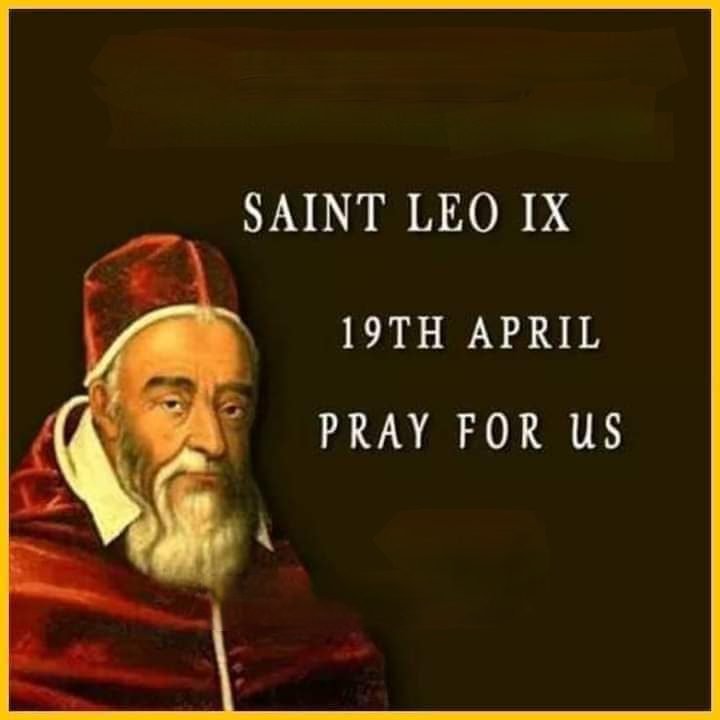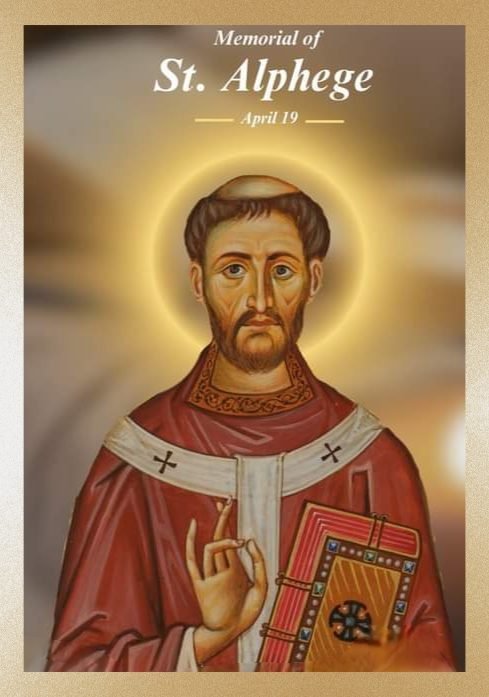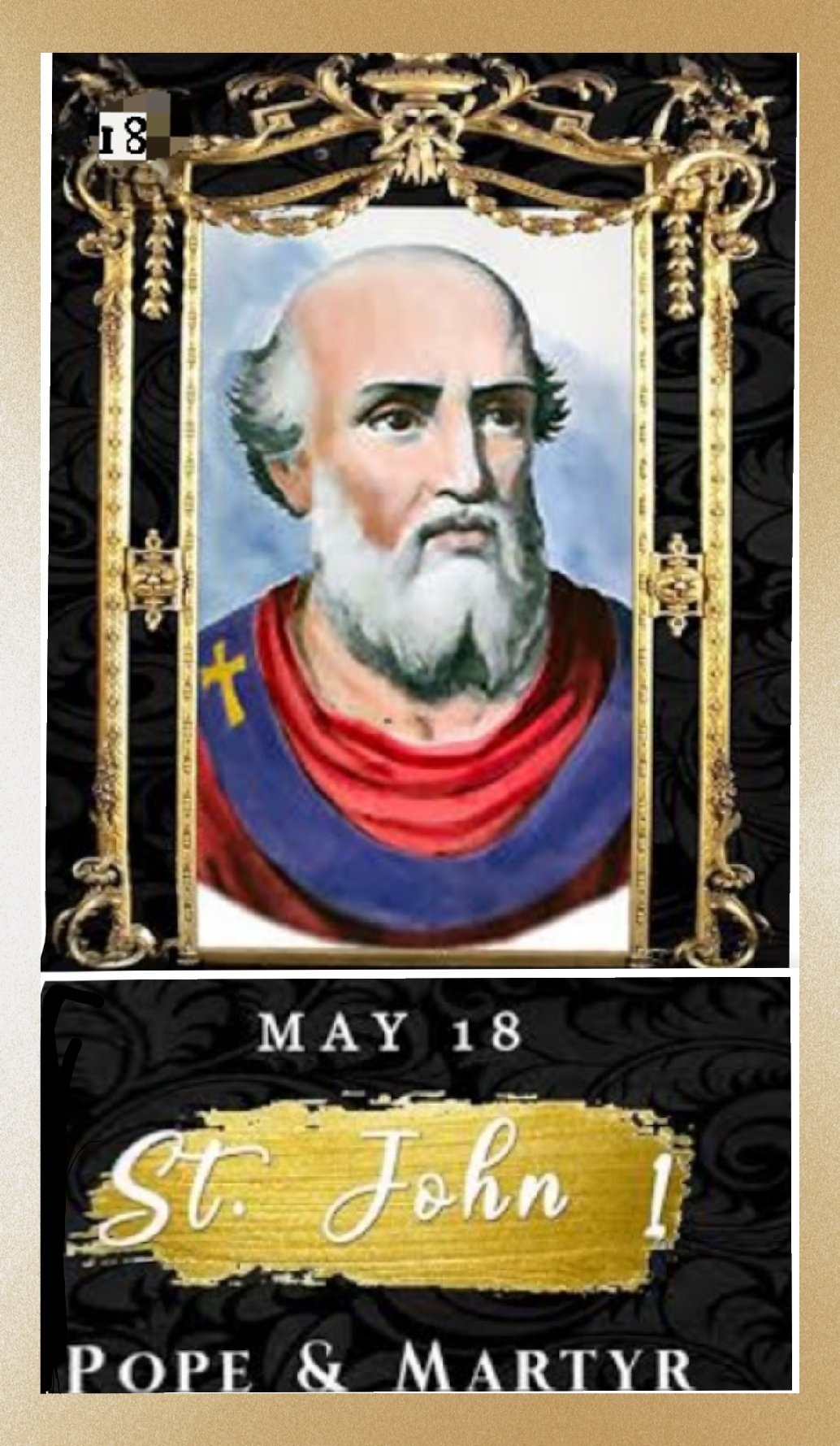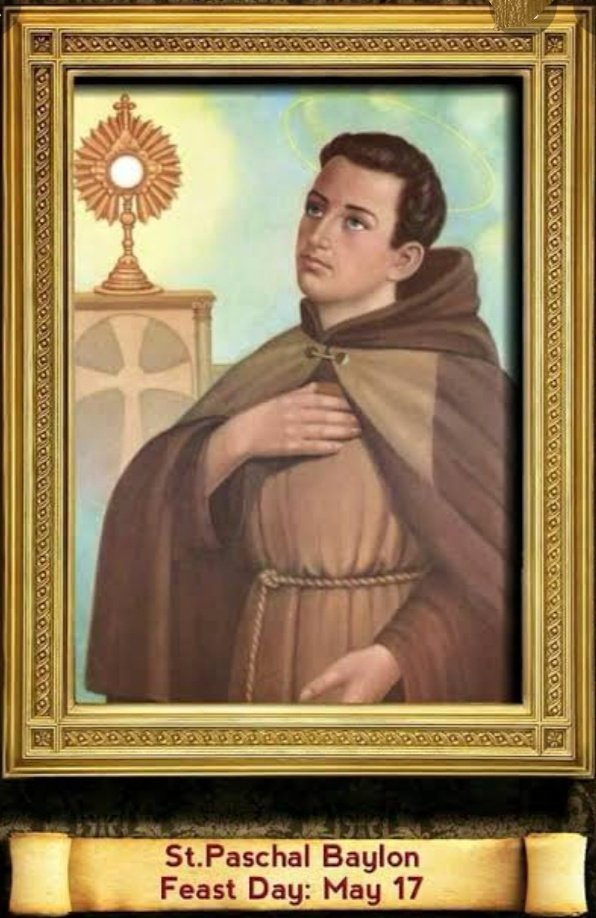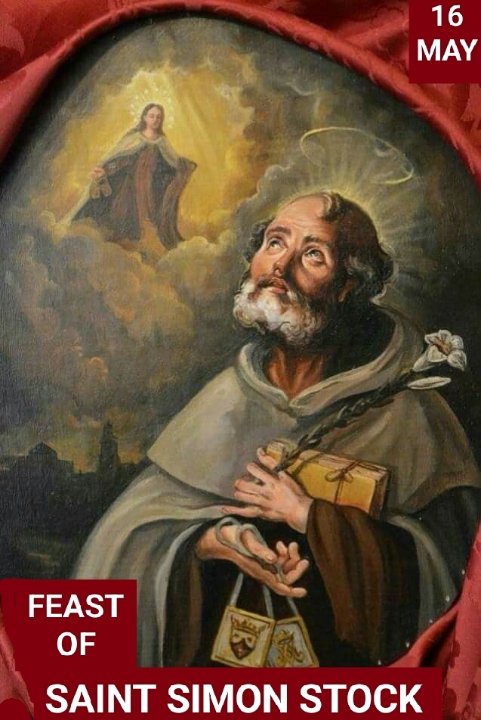
TODAY’S GOSPEL READING – 18 APRIL
April 18, 2024
1 Thessalonians 5:16-18
April 19, 2024FEAST OF SAINT ALPHEGE OF CANTERBURY
FEAST DAY – 19th APRIL
Aelfheah, also known as Alphege, was an Anglo-Saxon Bishop of Winchester, later Archbishop of Canterbury. He became an anchorite before being elected abbot of Bath Abbey. His reputation for piety and sanctity led to his promotion to the episcopate and, eventually, to his becoming archbishop and who was venerated as a martyr after his murder by the Danes.
Of noble birth, Aelfheah entered the Benedictine abbey of Deerhurst, Gloucestershire, and later became a hermit at Bath, Somerset, where followers elected him abbot. Aelfheah was a friend of Archbishop St. Dunstan of Canterbury, through whose influence he was named bishop of Winchester in 984. Aethelred II the Unready, king of the English, sent Aelfheah as ambassador to King Olaf I Tryggvason of Norway, who in 994 entered Britain and whom Aelfheah confirmed and allegedly persuaded not to invade England again.

In 1005 he became the 29th Archbishop of Canterbury and immediately went to Rome to receive the pallium (symbol of metropolitan jurisdiction) from Pope John XVIII. Back in England, he called the Council of Enham (1009) in a futile effort to halt the social demoralization caused by the devastating Danish invasions. On Sept. 8, 1011, the Danes began their sack of Canterbury and seized Aelfheah.
He was ill-treated and held seven months without ransom, which he refused to pay with money that the poor would have had to supply as taxes. Aelfheah thereupon was slain by the Danes, after first being pelted with ox bones remaining from their feast. The ransom for his release was about three thousand pounds and went unpaid. Alphege refused to give the Danes that much, an act which infuriated them. He was hit with an ax and then beaten to death.
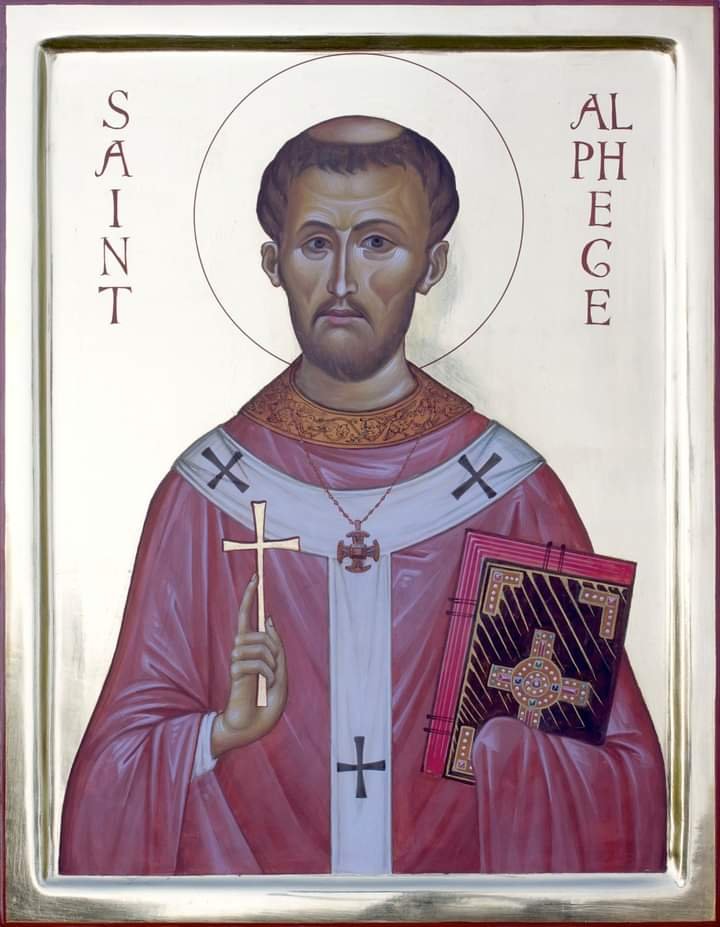
Revered as a martyr, Alphege’s remains were placed in St. Paul’s Church in London. The body, moved to Canterbury in 1023, was discovered to be incorrupt in 1105.
Relics of St. Alphege are also in Bath, Glastonbury, Ramsey, Reading, Durham, Yorkminster and in Westminster Abbey. His emblem is an axe, and he is depicted in his pontifical vestments or as a shepherd defending his flock.
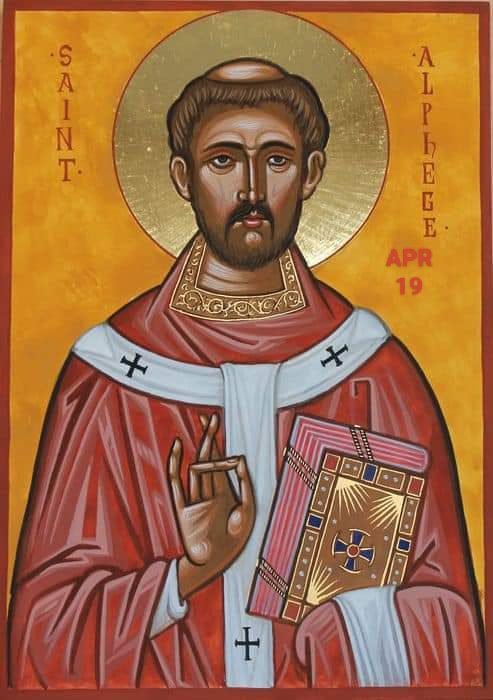
He was first buried at St. Paul’s Cathedral, London, by order of King Canute of Denmark, England, and Norway; his body was removed to Canterbury in 1023 amid great splendour. From the earliest years after his death he was venerated as a martyr. The parish church of Greenwich is dedicated to him.
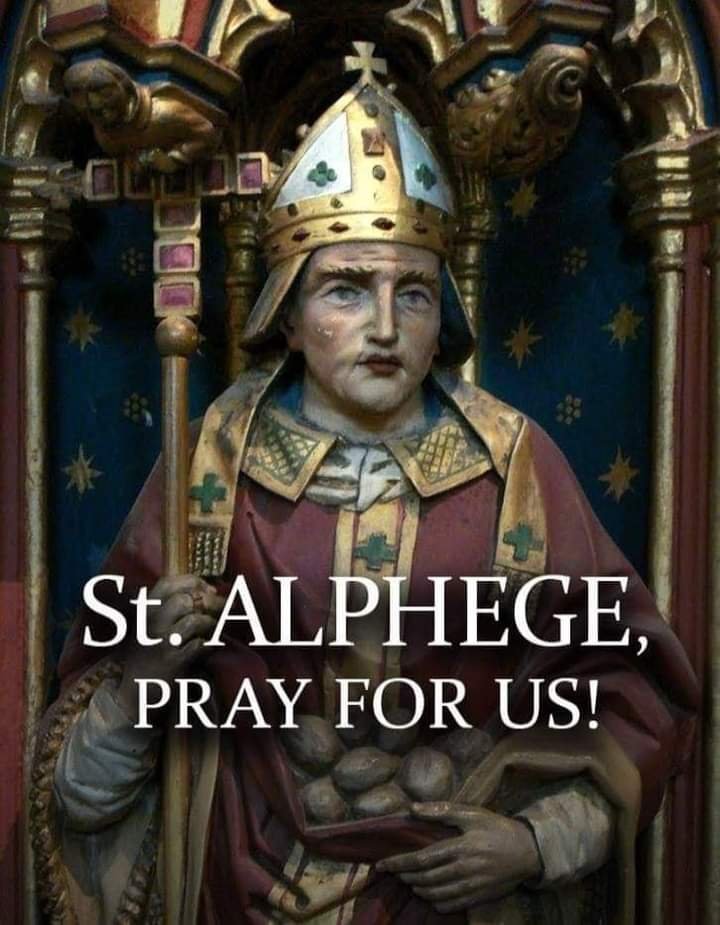
PRAYER
Lord Jesus Christ, who didst willingly walk the way of the cross: Strengthen thy Church through the example and prayers of thy servant Alphege to hold fast the path of discipleship.
For with the Father and the Holy Spirit thou livest and reignest, one God, for ever and ever. Amen
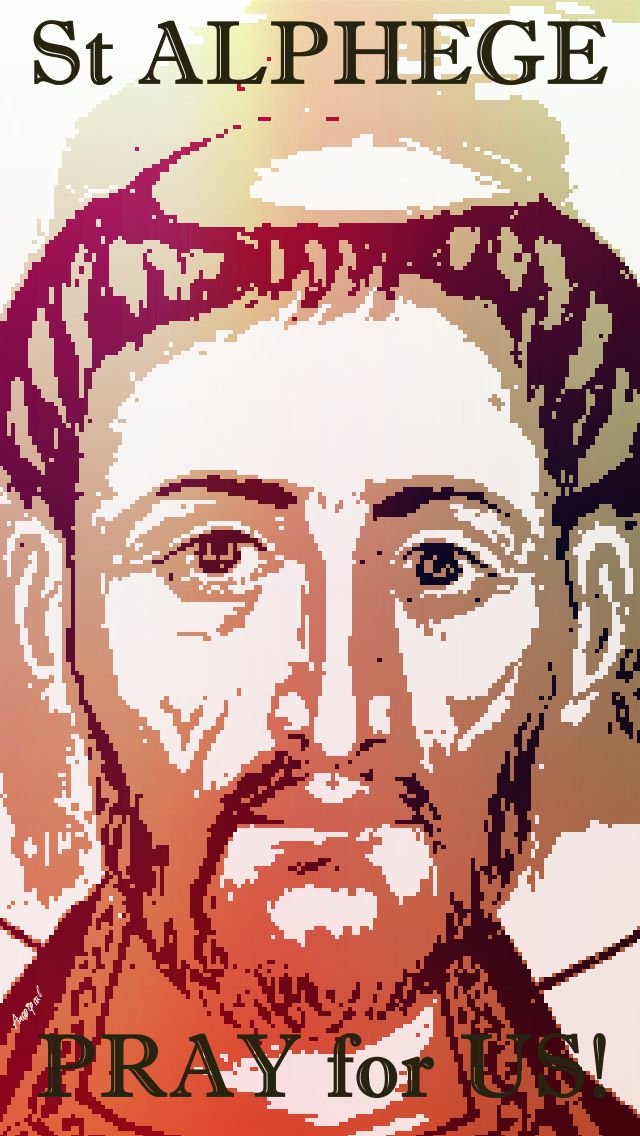
Saint Alphege, pray for us.
******************************************************************************
ALSO CELEBRATED
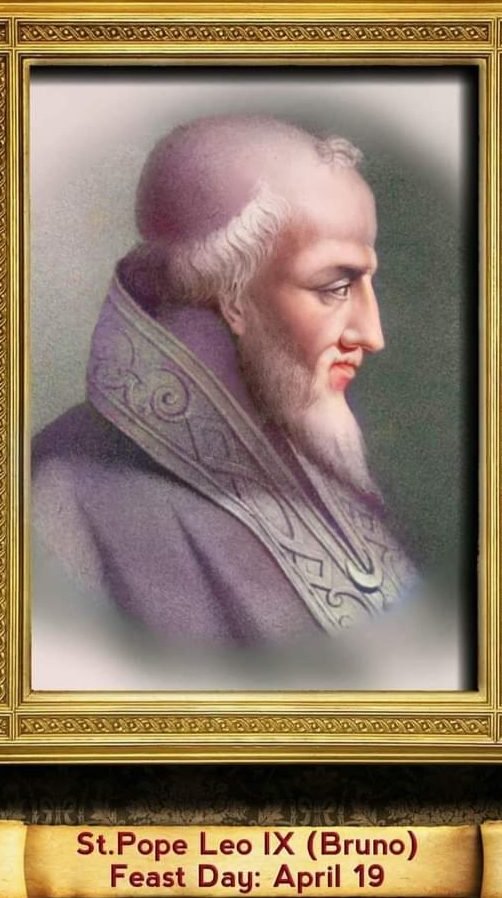
FEAST OF POPE SAINT LEO IX
FEAST DAY – 19 APRIL
Saint Leo IX, orig. Bruno, count von Egisheim und Dagsburg, (born 1002, Egisheim, Alsace, Upper Lorraine—died April 19, 1054, Rome; feast day April 19), Pope (1049–54). He was consecrated bishop of Toul in 1027. He was named pope by Emperor Henry III but insisted on election by the clergy and people of Rome. His efforts to strengthen the papacy and eradicate clerical marriage and simony laid the foundation for the Gregorian reform movement.
His assertion of papal primacy and his military campaign against the Normans in Sicily (1053) alienated the Eastern church. His representatives excommunicated the patriarch of Constantinople. Though Leo had already died, their act triggered the Schism of 1054.
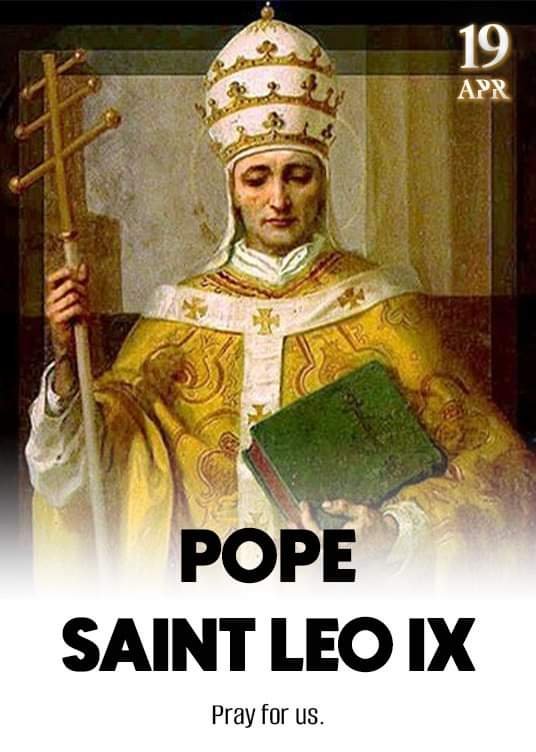
Pope Leo IX was born Bruno, Graf von Egisheim und Dagsburg, on April 19, 1002, in Egisheim, Alsace, Upper Lorraine (now Eguisheim, France), to an aristocratic family. His father was Count Hugh of Egisheim, and his father’s cousin was Emperor Conrad II.
At the age of 5, Leo IX’s family sent their only son to Toul to be educated alongside other boys of noble birth. Well-liked, he flourished there and was a popular student. He was canonized, and in 1026, at age 25, was consecrated bishop.
After the death of Damasus II, Leo IX was appointed pope by Emperor Henry III of Germany. Seeking the approval of the clergy and the citizens, he traveled to Rome, Italy, where he gained the consent of the masses. He became pope on February 12, 1049, and assumed the name Leo IX.
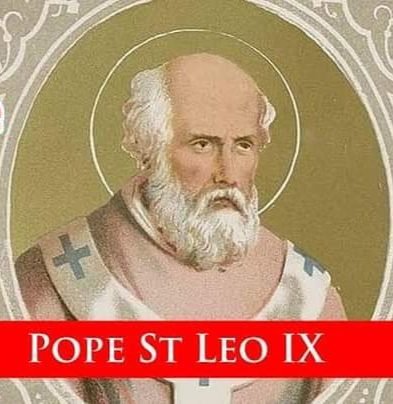
Leo IX’s more traditional values compelled him to campaign toward erasing what he believed were the Church’s evils at the time, including clerical marriage (pushing for celibacy among members of the clergy), simony (the buying or selling of church offices or powers) and lay investiture (the appointment of bishops, abbots and other church officials by feudal lords). His desire to hold synods, or church councils, and his travels around Europe earned him the nickname “The Pilgrim Pope.”
In his desire to have the Roman Catholic Church become the heart of all Christianity, Leo IX, leader of the Western Church, gathered others like himself who sought reform. With their help, he succeeded in transforming the Roman papacy into a worldwide power.
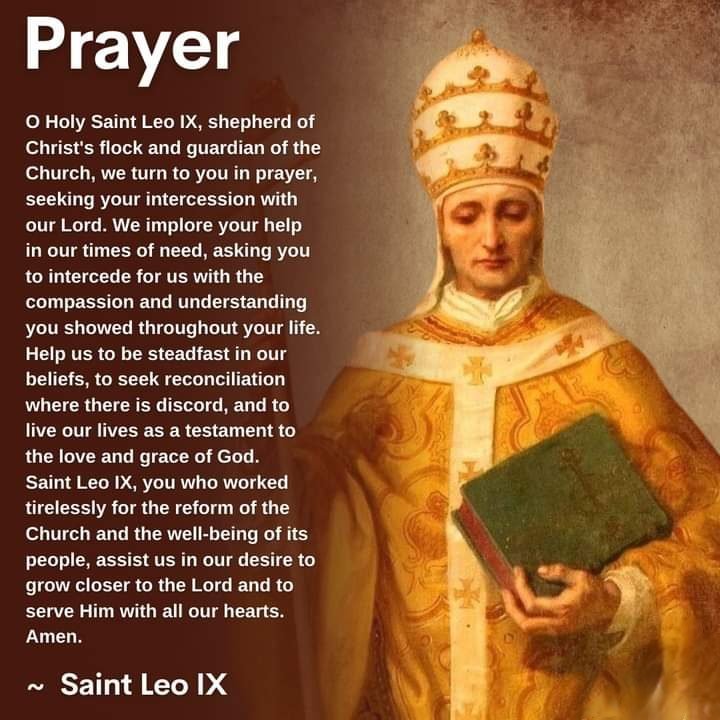
The actual break from the Eastern Church—which was headed by Michael Cerularius, patriarch of Constantinople—came about in part because of Leo IX’s military involvement. When the Normans, who threatened the papal state, invaded Italian regions in 1053, Leo IX—now without the help of Emperor Henry III, who had withdrawn—led an army to banish them. The Normans defeated the papal army, however, taking the pope prisoner in June 1053. He was held for nine months in Benevento, Italy.
Leo IX died on April 19, 1054, shortly after his return to Rome, and was succeeded by Victor II. Leo IX was later declared a saint by the Church, and his feast day is celebrated annually on April 19.
PRAYER
Almighty ever-living God, who chose blessed Leo IX to preside over your whole people and benefit them by word and example, keep safe, we pray, by his intercession, the shepherds of your Church along with the flocks entrusted to their care, and direct them in the way of eternal salvation.
Through our Lord Jesus Christ, your Son, who lives and reigns with you in the unity of the Holy Spirit, God, for ever and ever. Amen.
